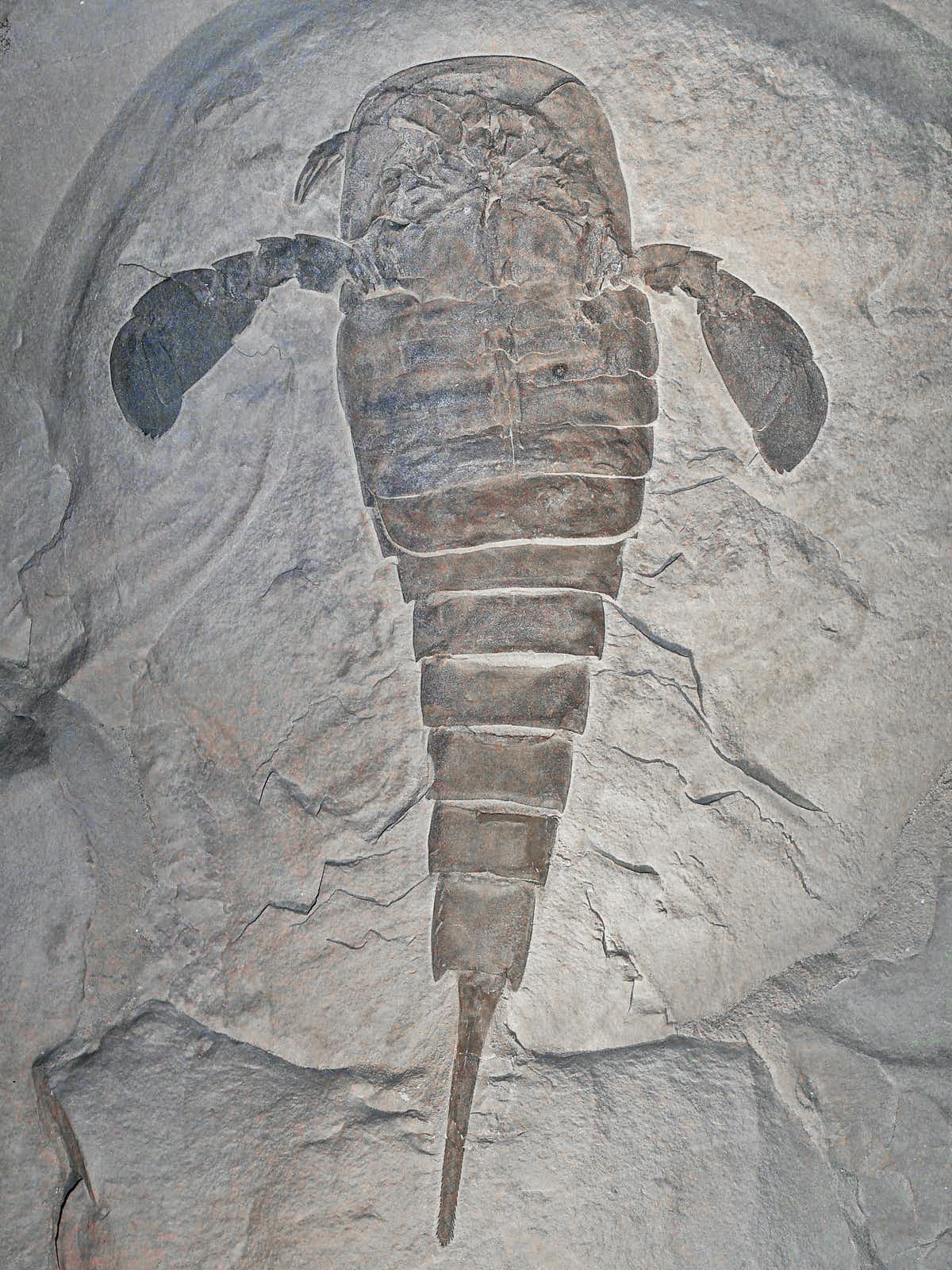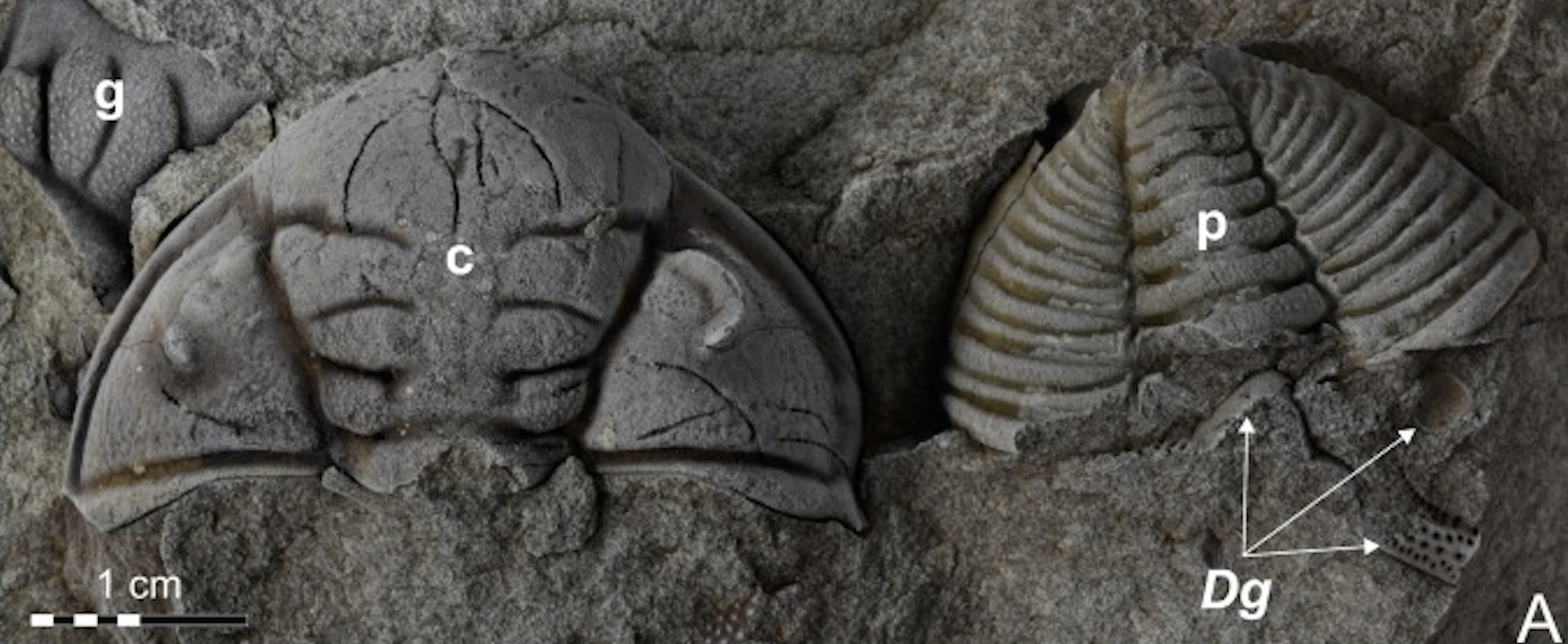A mangled trilobite, found fossilized in Czechia, looks like it narrowly escaped becoming lunch more than 450 million years ago.
All that's left of this ancient marine arthropod is the head, but researchers think the pincers of something like a giant sea scorpion could have been what amputated its eye, scratching the shell and scarring the face.
Few trilobites have been found who've suffered a head wound and survived beyond it, but somehow this particular specimen (Dalmanitina socialis) lived to molt another day. It even regrew a fully functional eye to make up for the one it had lost.
"The restored eye, although shifted posteriorly and differently oriented, with a rather irregular distribution of lenses, was still a functional organ," the Czech researchers describing the find conclude in a new paper.
During the Paleozoic Era, before the mass extinction that ended most life on Earth, large arthropods that resembled scorpions, called eurypterids, were fearsome predators of the ocean floor.
Colloquially known as 'sea scorpions', they came in many sizes, from that of a human hand to an entire human; for these impressive creatures, trilobites were an easy and abundant source of food.
 Eurypterus remipes (H. Zell/Wikimedia Commons/CC BY 3.0)
Eurypterus remipes (H. Zell/Wikimedia Commons/CC BY 3.0)
It's unclear exactly what attacked the mangled trilobite, but researchers say the scratches on its shell look like they were once drawn by pincers or claws, pointing to a potential encounter with a sea scorpion.
Remarkably, the trilobite clearly lived long enough to heal its wounds and regenerate a new eye, which makes the fossil of special interest.
 Internal mold of the head of trilobite. (Fatka et al., International Journal of Paleopathology, 2021)
Internal mold of the head of trilobite. (Fatka et al., International Journal of Paleopathology, 2021)
Trilobite fossils with injured eyes are incredibly rare - probably because the evidence is usually eaten by predators. Only a handful of cases have been reported to date in the literature, the team writes.
In 2017, for example, a trilobite fossil found in Norway showed dent-like injuries to the head and a punctured eye that looked as though they came from the pointed horn-beak of a cephalopod, roughly 465 million years ago.
Today, it's known that modern cephalopods, like octopuses, drill into the eyes of crabs when attacking their prey. But the damaged eye of the trilobite recently analyzed in Czechia does not show any evidence of having been punctured.
Something else might therefore have attacked it, and research in the same region has uncovered trilobite fossils alongside large sea scorpions, with pincers very capable of scratching shells and amputating eyes.
As such, researchers think a 'large arthropod' such as a sea scorpion is the most likely culprit of the trilobite attack. The predator could possibly have even been a pterygotioid - members of this superfamily of eurypterids could grow over two meters (6.5 ft) in length.
Trilobite fossils contain some of the oldest evidence of eyes on the planet, and finding one that has regenerated is quite the rarity. This one has been sitting in a collection at the Czech Geological Survey since 1846, but it's taken us until now to look really closely.
Sea scorpions might have been sneaky, but trilobites were clearly tough.
The study was published in the International Journal of Paleopathology.
#Nature | https://sciencespies.com/nature/a-giant-sea-scorpion-may-have-attacked-this-trilobite-450-million-years-ago/
No comments:
Post a Comment